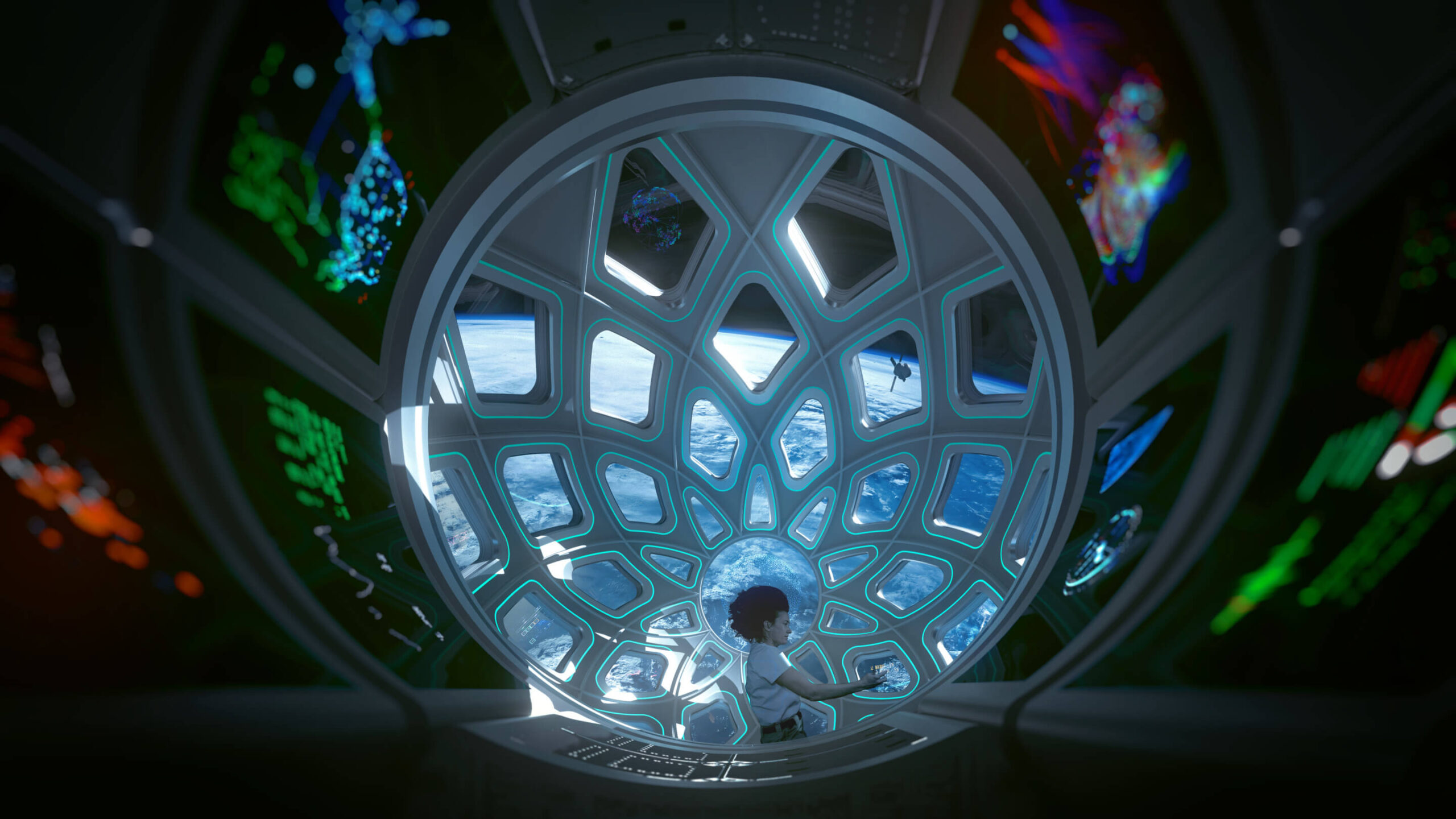
LEO Space Station
Space
Typology: Space Architecture
Status: Concept
Credit: SOM, University of Manchester
This project includes research into the development of new composites, advanced manufacturing, and concurrent design and engineering of a future space station architecture. The project focuses on using fibrous composites that are enhanced using graphene. Using composite materials and advanced manufacturing technologies together with graphene has the potential to improve the performance, cost, and functionality of structures in space. An increasing number of commercial space efforts are being announced internationally, to enable a future economy in outer space. The project integrates cross-functional multidisciplinary expertise and architectural vision for next-generation space stations. This proposal for a Space Station was developed in collaboration with Scientists at the University of Manchester as a concept for space habitat architecture. I was the lead Space Architect and Designer working closely with engineers and material scientists to study the potential for unique solutions that might be enabled by advanced composites.
“As architects, our role is to combine and integrate the most innovative technologies, materials, methods and above all the human experience to designing inhabited environments.” “Conducting research using graphene allows us to test lightweight materials and design processes that could improve the efficacy of composite structures for potential applications on Earth and future use in space.”
My Role
My role in the Graphene Space Habitat Partnership was as the Primary Investigator and Chief Space Architect. I was responsible for building the partnership with the University of Manchester that began in 2021 working directly with scientists and robotic manufacturing experts at the University. I established a partnership with the University of Manchester and worked closely with their team to research the potential use of composite materials in the design of a space habitat. I coordinated recurring meetings with their experts to integrate the multiple disciplines. I was the Chief Space Architect leading the design effort and responsible for the vision behind this initiative.
Process
Some of the key challenges in designing a space station include shielding from radiation, maintaining a pressurized environment, damage tolerance from micrometeoroids and space debris, and temperature variations. Graphene and other two-dimensional materials, together with lightweight fiber-reinforced composites can play an important role in the development of space structures. We studied a combination of advanced materials, including Graphene, MXene, and other materials by conducting specimen-level testing. The results of the project were a design that integrated an observatory-type habitat using unique material performance to push the limits of architectural design.
Design Features
The observatory will incorporate various human experience functions. There will be mobility aids for users to move around safely and this includes grab bars, restraint hardware, graphic indications, and mobility lighting. The observatory will also include multiple computers to conduct experiments and monitor environmental information. These computers are located between windows at nodes where they do not obstruct views. Integrated linear lighting will delineate each window for optimal illumination control.


